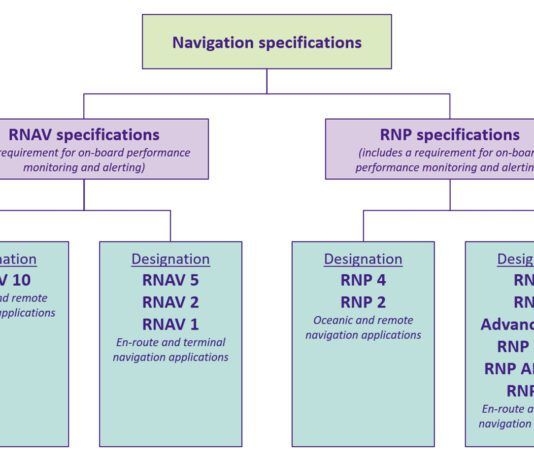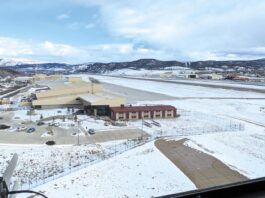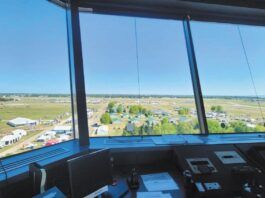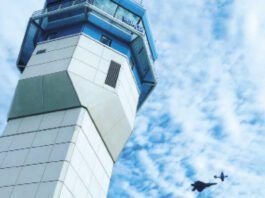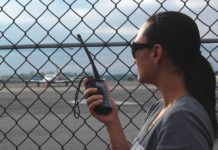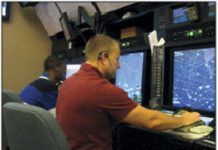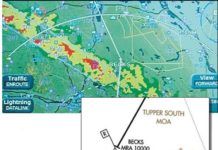Routing Puzzles
In the December 2014 issue, I answered a question from Tim, a reader, regarding filing an IFR flight plan. DUATS flight planner computer accepted the flight plan but the FSS planner rejected it. That was disconcerting, so we dug into it. This article will explain whats happening and Ill illustrate how different flight planning tools can behave differently with some less common routing elements.
ATC offered Tim a clearance that read KAGC AGC073 HOMEE JST300 JST SEG. ATCs intent was to have Tim depart Allegheny County, PA, join the AGC VORs 073 radial and fly it to HOMEE. Then he would fly southeast on the JST VOR 300 radial to JST. Neither route is an airway and this was not a preferred route. Tim has only VOR and DME (with a VFR GPS) aboard and filed accordingly.
Good intentions notwithstanding, ATC gave Tim a flyable clearance but not one that FSS or Center would accept if you were to file it. A clearance you cant file isnt worth much, and this one fails in two respects.
ATC offered Tim a clearance that read KAGC AGC073 HOMEE JST300 JST SEG. ATCs intent was to have Tim depart Allegheny County, PA, join the AGC VORs 073 radial and fly it to HOMEE. Then he would fly southeast on the JST VOR 300 radial to JST. Neither route is an airway and this was not a preferred route. Tim has only VOR and DME (with a VFR GPS) aboard and filed accordingly.
Good intentions notwithstanding, ATC gave Tim a flyable clearance but not one that FSS or Center would accept if you were to file it. A clearance you cant file isnt worth much, and this one fails in two respects.
Diverse Vector Areas
Imagine youre departing into a low overcast, and the tower assigned you a heading. ATC has some way to keep you from hitting anything on that vector, right? Yeah…sorta.
Diverse Vector Areas (DVAs) have been established at some larger airports for a safe and standardized way to guarantee obstacle clearance for aircraft departing on radar vectors. DVAs have been surveyed and found to be clear of obstructions on a standard-or published non-standard-climb gradient. Theyve recently started to appear in the terminal procedures publication.
Diverse Vector Areas (DVAs) have been established at some larger airports for a safe and standardized way to guarantee obstacle clearance for aircraft departing on radar vectors. DVAs have been surveyed and found to be clear of obstructions on a standard-or published non-standard-climb gradient. Theyve recently started to appear in the terminal procedures publication.
Angle of Attack
Research by the General Aviation Joint Steering Committee, a group chartered by the FAA to improve GA safety, attributed 40 percent of fatal GA accidents to loss of control in flight. That is more than the next six causes, combined. Many of these accidents resulted from inadvertent stalls and spins. The groups top recommendation for improving safety was installing AOA indicators in GA airplanes.
When it comes to flying a wing, only one thing matters-angle of attack (AOA). For airplanes, we add power to that wing and get performance. While power is accurately displayed via engine instruments, AOA is an enigma fleetingly glimpsed through airspeed and attitude. The books state that airplanes can stall at any attitude, yet our training confuses that information. Practicing stalls at one G teaches us that stalls occur when a certain attitude is reached. The results are troubling.
But, just slapping an AOA indicator on the glareshield wont magically solve these problems and make you a better or safer pilot. Strategic planning and tactical techniques enable AOA systems to effectively battle lift.
When it comes to flying a wing, only one thing matters-angle of attack (AOA). For airplanes, we add power to that wing and get performance. While power is accurately displayed via engine instruments, AOA is an enigma fleetingly glimpsed through airspeed and attitude. The books state that airplanes can stall at any attitude, yet our training confuses that information. Practicing stalls at one G teaches us that stalls occur when a certain attitude is reached. The results are troubling.
But, just slapping an AOA indicator on the glareshield wont magically solve these problems and make you a better or safer pilot. Strategic planning and tactical techniques enable AOA systems to effectively battle lift.
Loud, Clear, No Fear
Our main airport has several flight schools and they keep us air traffic controllers quite busy. Its easy to tell when they get a new batch of students-those first radio calls for VFR clearances and eventual taxi and takeoff are usually halting, uncertain affairs, dragging on as students parrot their instructors without truly understanding the lingo. It can be almost as painful for us as for the student.
Clumsy as those first steps may be, the subsequent journey will hopefully lead each student to true proficiency on the radios. Its not an easy road at times, especially once each advances into instrument training. The amount of radio communication and multitasking may be overwhelming at first.
Clumsy as those first steps may be, the subsequent journey will hopefully lead each student to true proficiency on the radios. Its not an easy road at times, especially once each advances into instrument training. The amount of radio communication and multitasking may be overwhelming at first.
Briefing: April 2010
The AOPA Air Safety Foundations annual Nall Report found an increase in accidents involving amateur-built aircraft. The statistics from 2008 showed the highest rate of fatal accidents and fatalities in 10 years. The 27-percent lethality rate in these accidents was 10 full percentage points higher than that for accidents in type-certificated airplanes, according to the report.
Pistons in the System
The needle on my GA-o-meter registered an optimistic uptick this morning. In other words, Im getting more submissions for On The Air, IFRs much-loved back page. Over the past five years at the helm of this magazine (five years exactly with this issue), OTA has been my barometer for how much people are flying light GA and in what way.Theres a predictable uptick every spring and Im beginning to see it. History says it should peak in May and then spike again in August or September. Winter sees fewer submissions, and the ones that do come in are mostly from airline pilots or folks running all-weather aircraft.
A Closer Look
To get a better understanding of the intent of the Airman Certification Standards, lets take a closer look at the holding procedures task under the air traffic control clearances and procedures area of operation.
Good-Bye PTS; Hello ACS
If the FARs and the AIM comprise the bible of flying, the practical test standards (PTS) would be favored hymn books. But, just as the worlds religions occasionally modernize themselves, the FAA is getting ready to burn PTSes on the pyre in exchange for a completely new system.The new system, known as the Airman Certification Standards (ACS), is a major overhaul of the certification process effecting every license and rating. Whether youre thinking about adding to your ticket, are an instructor or you simply plan to get an IPC, it would behoove you to know a little about these changes before they arrive. The last thing you want is that deer-in-the-headlight look if the instructor asks you to review the pertinent ACS.
Arinc 424 Leg Types
There is an old joke that has three people arguing over what is the smartest machine in the world. The first one says, The smartest machine is the electronic computer. It can solve any problem in a fraction of a second.
Briefing: February 2015
Solar Impulse, the one-of-a-kind solar-powered aircraft designed to fly around the world, is now in Dubai, where it will launch in March. The aircraft was built and tested in Switzerland. It was then disassembled and flown to Dubai aboard a cargo airplane. Andr Borschberg and Bertrand Piccard, who have led the effort, said they are confident in the aircrafts capability and their own training, and they will take turns as pilot. The expedition is expected to take 25 days of flying, and will be completed in stages over four or five months. Some legs above the Atlantic and Pacific will require five to six days of nonstop solo flight. The aircrafts wings measure about 236 feet across, and carry more than 17,000 solar cells.
Launching on the Gauges
On a recent IFR flight, climbing through 500 feet, I noticed the tach was low by 300 RPM. It had been normal just moments before when I checked it on the takeoff roll. Just as it really sunk in that something was amiss, Tower called to hand me off to Departure. I declined, asked to land immediately and alerted them to the abnormal condition. The discrepancy didnt reappear on a second run-up, or ever since.
Flying With a TAA Mindset
Turning cockpit technology into mission capability takes more than reading manuals. Meld the surfeit of data into your decision-making process to get more from your pixels.

